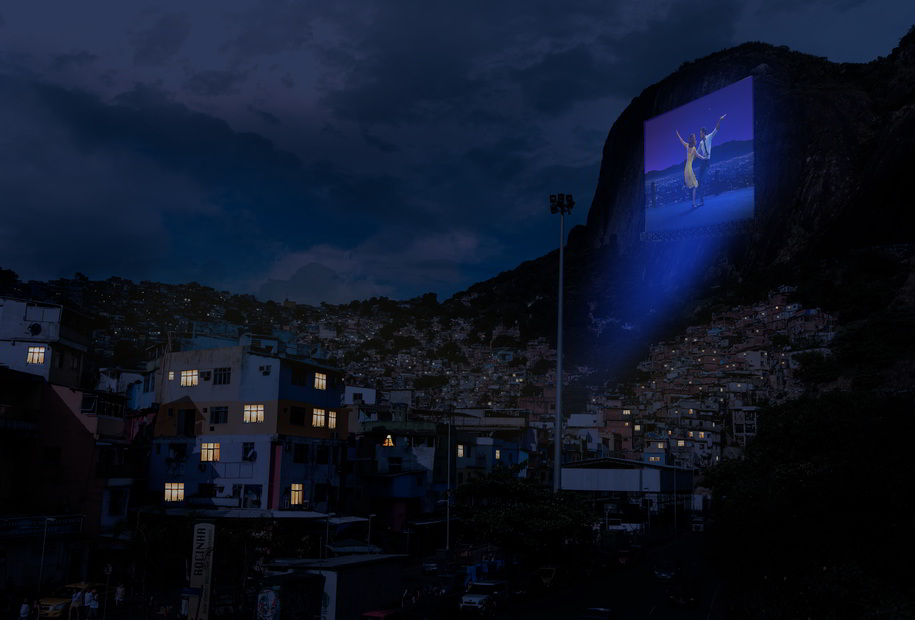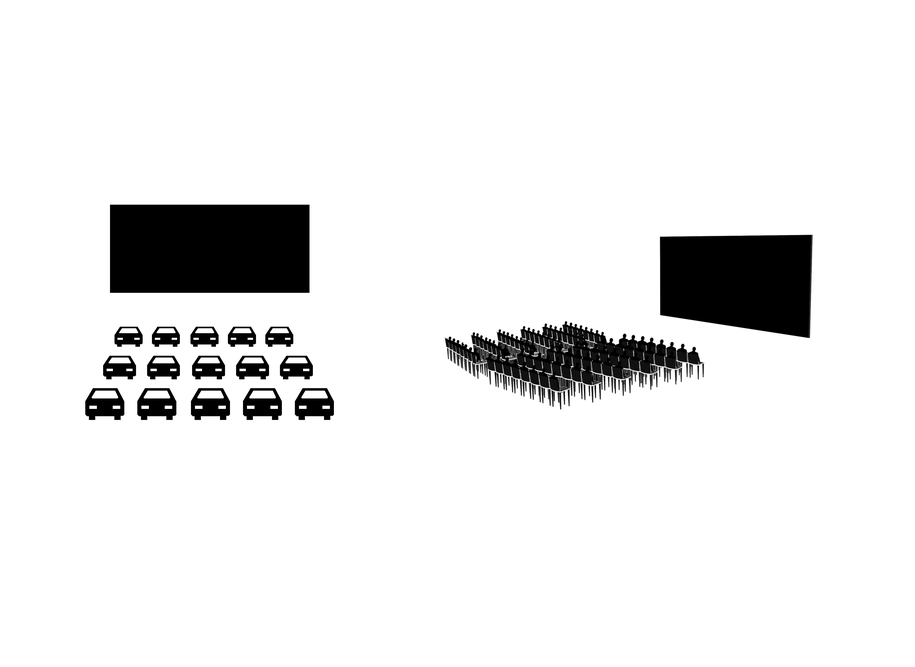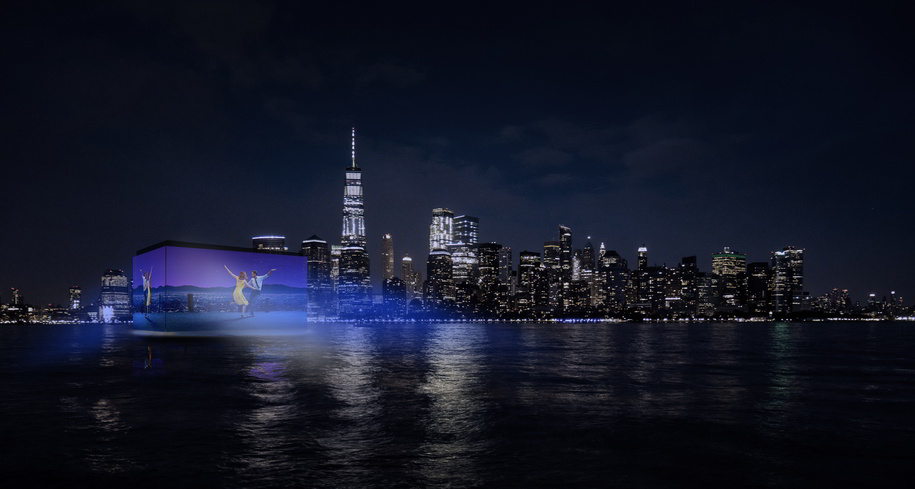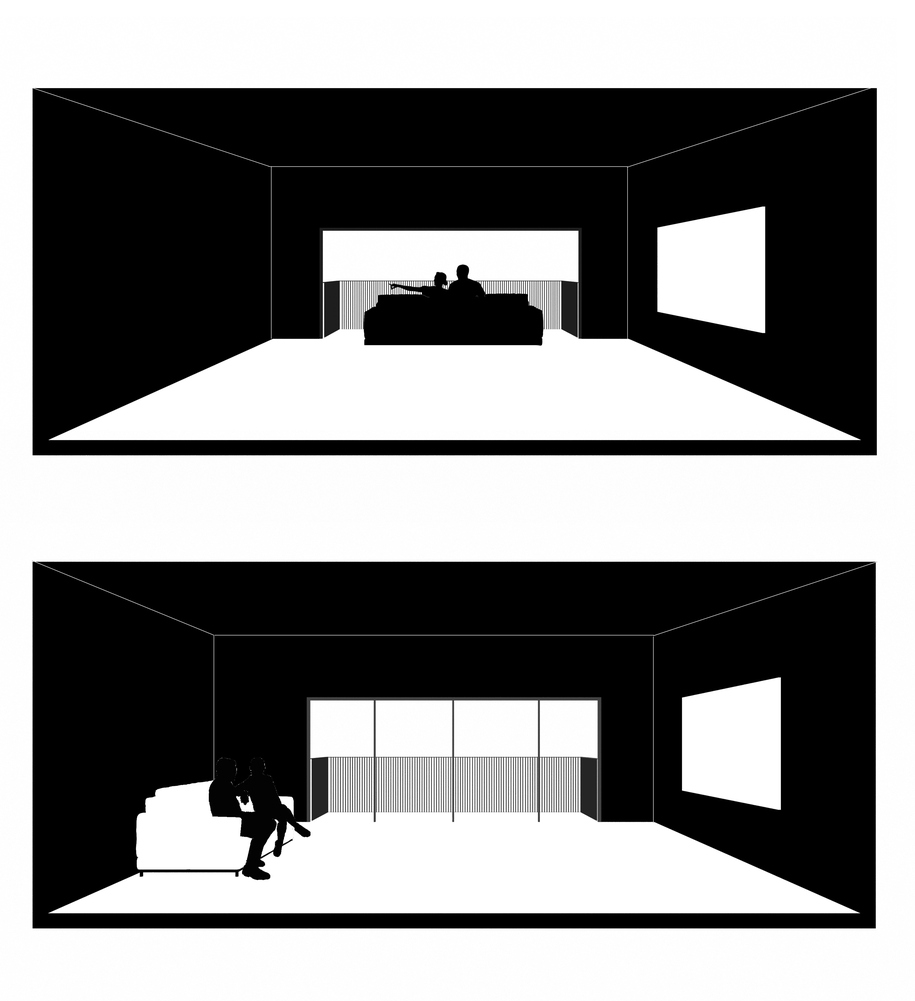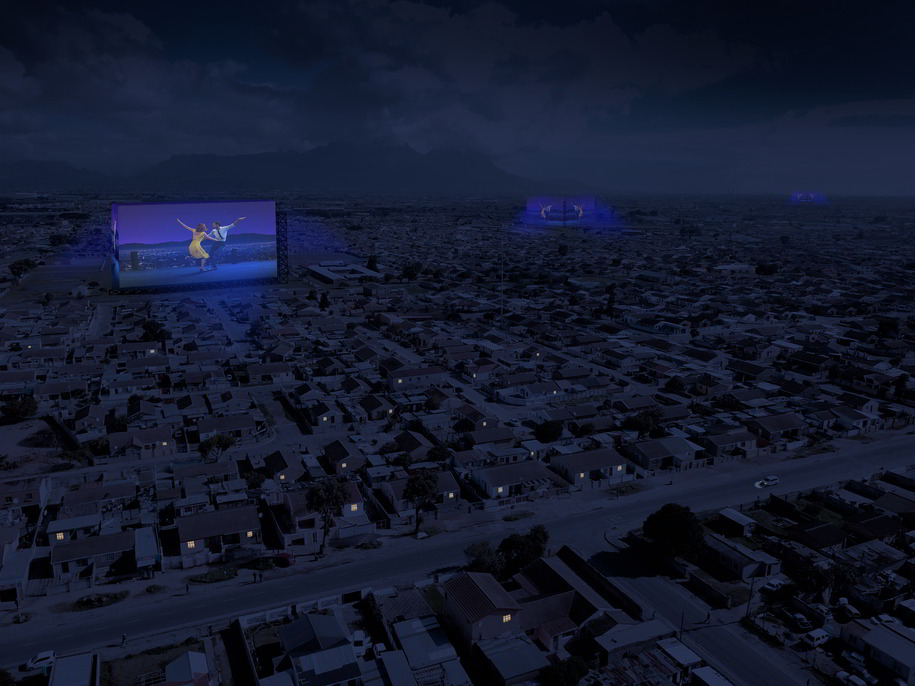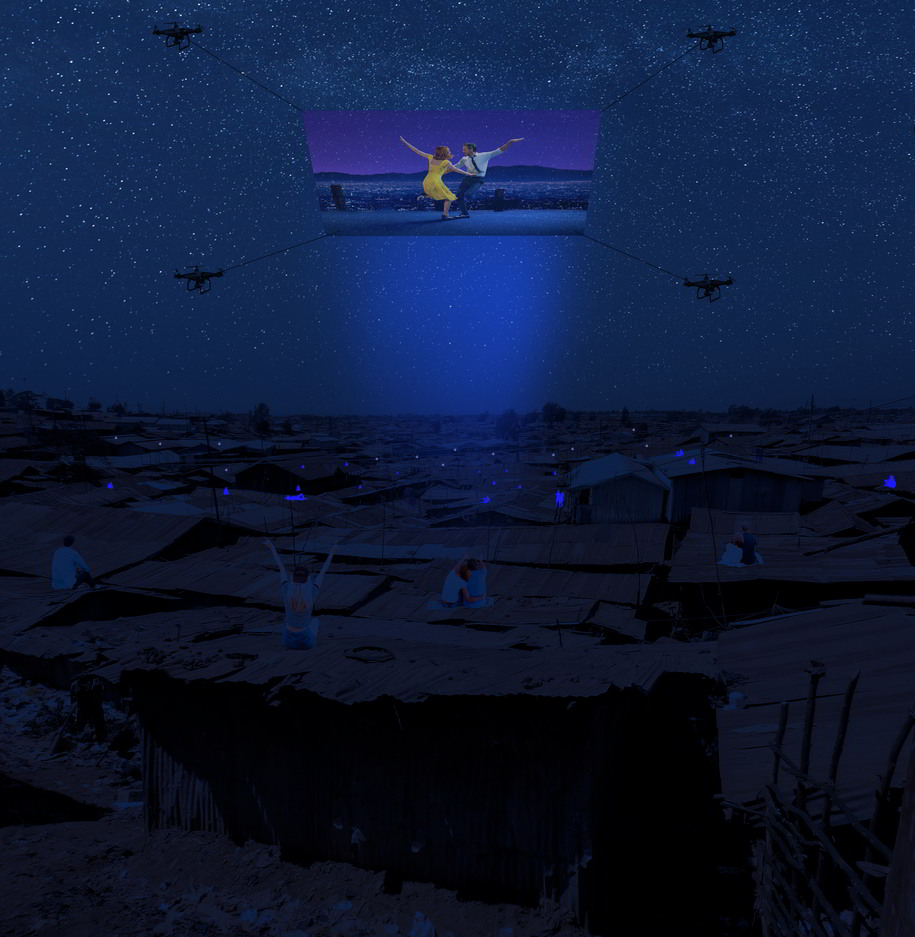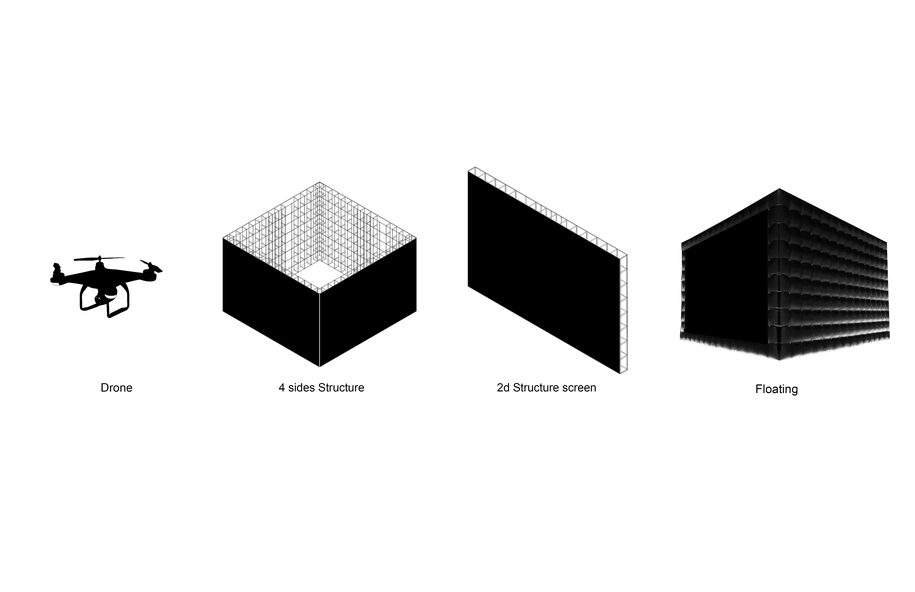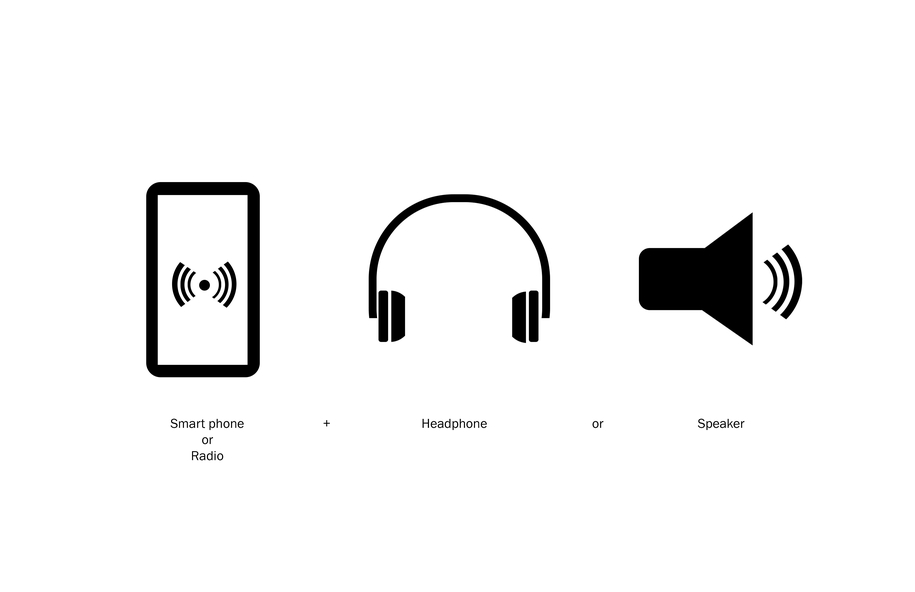Pandemic Architecture, an International Ideas Competition curated by the Design Ambassador for ARCHISEARCH.gr, invited the creative community to open up a dialogue and create a think tank, looking for ideas from the architectural and design community about the future of the living, the workspace, the public space and the tourism industry after the outbreak of Covid-19.
Pandemic Home Theater, was shortlisted in top 50 out of 440 projects.
-text by the authors
COVID-19 forced us to stay at home, which is hard and painful probably for everyone.
With most people nowadays, in urban and cosmopolitan environments living alone, this newfound solitude has painfully shown us how social interaction is deeply important and an essential element of the human kind and its mental wellbeing.
The longer the self-quarantining periods lasts, the more people crave for in person communication, communal activities and experiences that can be shared; not only in close circles but also in anonymous crowds.
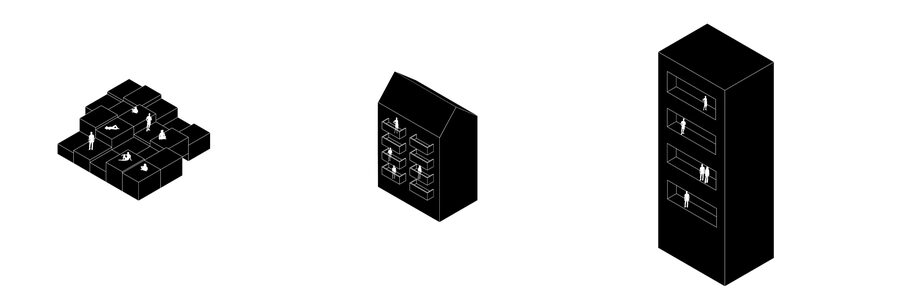
Watching movies together has long been a favorite pastime of many, a way to relate to each other. While we are currently unable to do this, watching movies through an online platform feels like the next best thing.
But online home-streaming with its ever-improving programming can’t replace the unique experience of watching a movie with many co-viewers in a dark auditorium, what is yet again proven by the re-cent renewed success of drive in theatres.
Lucky Couples that are escaping quarantine these days by consuming entertainment in such way, could also easily just sit in their living rooms with a TV, however purposely decide for an activity with a social component.
Perhaps as we maneuver our way through and hopefully out of Covid-19, we should also have the profession of architects as creative thinker come up with ideas that cater to such human needs and how to more easily overcome these dire times of loneliness.
Since restrictions are easing now, new concepts need to be developed that have the chance to give at least relief in the next similar situation.
With what kind of infrastructure can we and our municipalities prepare for the future?
Our proposal:
Mentioned Drive-in cinemas are a classic approach to watching movies. In this together yet private cinema experience people can enjoy a fi lm, feel like they are a part of something, but still be seated in their own comfortable safe cars. We imagine that a huge, public, cinema screen can bring this kind of social, cultural, fair and fun entertainment to each neighborhood in a similar fashion. The main idea is having a public space without people gathering closely. Rethinking scale in space of architecture and urban design was our architectural challenge. Although we cannot go to the cinema to watch the movies together, we can watch one movie at the same time from our balcony/ window or roof at safe distance.
For our presentation, we considered real cities around the world & are dealing with the existing situation. With each city setting we are able to demonstrate, that in order to implement our idea, all that is needed is a huge white screen, a support structure, a phone and of course the darkness of night. In addition, we made sure to apply our idea to cities with differing environments and architecture in order to showcase that these variables do not affect its success.
Challenge of the idea:
One of the challenges encountered when watching a movie from distance is the sound. It can be solved with simple radiofrequency. This is a very convenient way that people usually use for a silent disco. Using headphones or connecting the radio (which can be accessed via radio on phone) to a speaker can provide a solution for receiving the movie’s audio.
____________________________________________________
Facts & Credits
Participants: Ulrich Wagner
Mahdi Ghavidel Sedehi
Country: USA
The project was shortlisted in top 50 out of 440 projects.
The impact of Pandemic Architecture competition on the international architectural community was astonishing, with the number of registrations to exceed 800, with the final proposals to exceed 400 and with participants from more than 60 different countries.
Results were officially announced on the 25th of September.
_________________________________________
Check out the open call and the jury here!
READ ALSO: DARK RUNNER | Pandemic Architecture Top50
